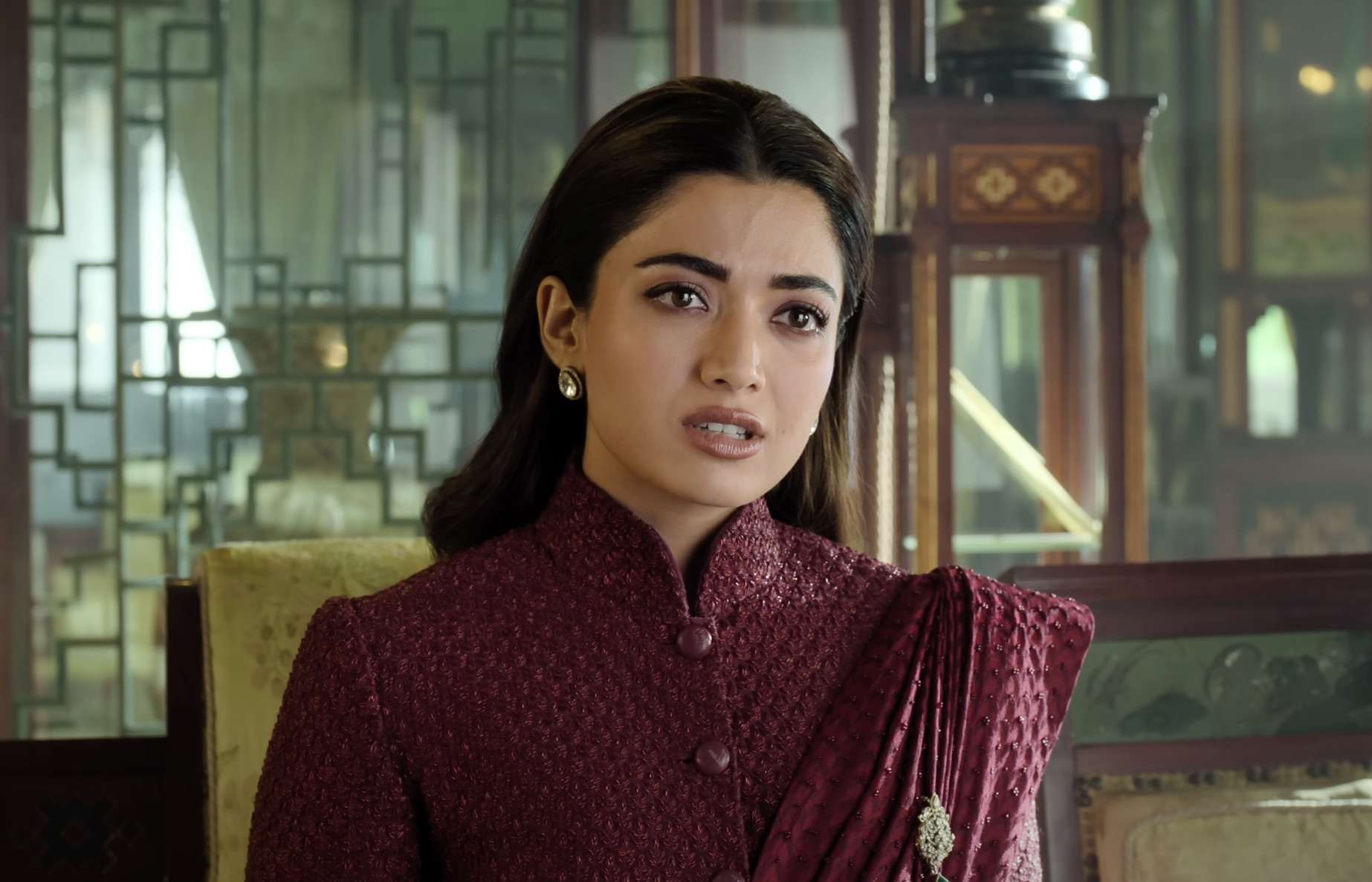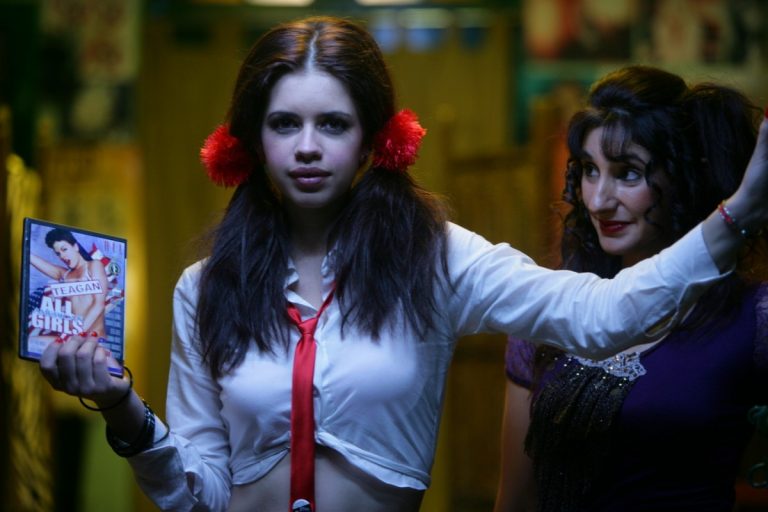Sikandar (Salman Khan) goes by many names, starting from Sanjay, Rajasaab, Bhaijaan, Radhe, Yuvraj Vijay Singh, and all the character names that you can immediately think of from his previous films. He plays the same old hunky action hero with a swag without much intervention in terms of his acting or dancing skills or the demands of the plot. He repeats himself to the point that it becomes a defining quirk of his character, registering an obsessive nature over his style against any narrative logic. Here too, his iconic bracelet makes an appearance, in a fist-fight that is situated inside a private airplane. The punches do land, and the wrongdoer is immediately brought to his knees.
It goes without saying that Salman Khan’s kicks are as impactful as ever. But in “Sikandar” (2025), the action sequences seem to be directly in competition with the songs in a Bollywood movie—they’re just that many in number! At some points in the film, once the action sequences are over, you’re left scratching your head, wondering about the need for an action sequence to be even there.
The random action sequences are awkwardly shoved into what was supposed to be a romantic drama. You’ve got a husband, Sanjay (Salman Khan), who is apparently too busy to spend time with his beloved Saisri (Rashmika Mandanna) before she passes away. Now he’s off trying to ‘find’ her in three strangers who just happen to be carrying her organs. Yes, her lungs, heart, and eyes all were donated before her death – more for emotional closure and less for being a Samaritan. Feels like a tear-jerker Korean drama, doesn’t it? But no, “Sikandar” (2025) is too confused by its story or genre that it belongs to many. It’s a royal story, an action film, a love story, and an environmental awareness and organ donation campaign all in one.
To find the three people, Sikandar arrives in Mumbai, royally traveling by train. He takes a taxi and arrives at a chawl. People are crammed in tiny spaces and coughing their lungs out. The situation seems dire. There’s also a patriarch who is insistent on not allowing the women in his household to work outside and a subplot where capitalism is single-handedly destroying the planet with pollution.
Alongside that, there is a heartbroken girl who has been abandoned by her boyfriend for someone else. But it’s never really too much of a crisis for Sikandar! In the blink of an eye, he swoops in and solves every single one of these problems with all the grace and effortlessness of a king. He is actually the much-cherished king of Rajkot, and each of these characters is also the bearer of his wife’s organs. But even for a king, the problems are so shallow that they practically solve themselves.
To put some sense in this hero’s journey, writer-director A.R. Murugadoss adds two seemingly powerful and bald baddies – one is a minister, and the other, a police inspector – who will collectively leave no stones unturned to destroy any chance that allows Sikandar to keep his wife alive. The minister wants to get back at Sikandar because he holds him responsible for the death of his son (Prateik Patil Babbar).
That’s some serious villain motivation right there except neither of them actually manages to seem intimidating. They’re the kind of villains who get all worked up but forget to bring any actual menace or depth to the table. No strategy, no charisma, just two bald guys with grudges and nothing to back them up. And this is one of the key reasons why “Sikandar” (2025) fails as a mass action film – it never challenges the hero in a true sense.
Over the years, there’s been a noticeable trend in Salman Khan films where the character names from his previous films often become the titles of his new ones. It is a desire to serve the fan base by creating a sense of continuity and recognition with the audience. His Veer Singh Thakur from Tumko Na Bhool Paayenge (2002) found expression in the film Veer (2010). He’s played nearly a dozen variations of ‘Prem’, from Hum Aapke Hain Koun..! (1994) and Andaz Apna Apna (1994) to films like No Entry (2005), Partner (2007), and Ready (2011), all leading up to the title of Prem Ratan Dhan Payo (2015).
His Radhe from Tere Naam (2003) and Wanted (2009) made its grand return in Radhe (2021). His nickname Bhaijaan, coined by fans, made its way into Bajrangi Bhaijaan (2015) and Kisi Ka Bhai Kisi Ki Jaan (2023). Now, in the same vein, “Sikandar” (2025) brings up his character name from Race 3 (2018). But this is exactly where it goes wrong. This constant recycling of character names leads to predictability fatigue, making each new film feel less like a fresh chapter and more like a rerun of past roles. Even the fans are tired now. It isn’t a wrong assessment when it is said that all Salman Khan films feel like you’re watching the same movie with a different title, plot, setting, and heroine.
In “Sikandar” (2025), there is the royal affair of Prem Ratan Dhan Payo (2015), the gang loyalty of Wanted (2009), the emotional intent of Bajrangi Bhaijaan (2015), and the social commentary of Jai Ho (2014). At one point, the film almost feels like a public service ad for women’s empowerment and the ill effects of pollution. But despite its fan service and social commentary, the film fails to create a sense of loss and innocence that the death of a loved one usually brings. It was such a kind of purity and emotional depth that carried the journey of Bajrangi Bhaijaan (2015), where Salman Khan as Pawan Kumar Chaturvedi had to cross international borders illegally and send a little girl back home safely. Such emotions are missing in “Sikandar” (2025).

It helps that not many scenes of Rashmika Mandanna and Salman Khan are kept together, considering the significant age gap between them, but it also doesn’t help that the film doesn’t have many scenes of them together. Rashmika Mandanna seems to be straight out of her characters from Animal (2023) and Pushpa 2: The Rule (2024). Apart from being an eye candy and royally pandering to her husband, she is not of much service to the plot. Like the saying goes, behind every successful man, there’s a woman. In this case, she is that woman. And just when you think she might get a chance to do something else, she’s killed off to set the ball rolling for the plot to progress.
Writer-director A.R. Murugadoss has brought back the troupe of a dead spouse and even named the protagonist Sanjay, but he fails to re-create the magic and impact of Ghajini (2008). There is simply no time to grieve or feel the absence of a person, nor does the death feel like a punch to the gut. Not that any grieving would help because there was no romantic build-up for the love story or the death to work emotionally in the first place. It doesn’t help that the film throws in a few songs depicting the romance between Sanjay and Saisri because the songs are absolutely mediocre and forgettable. So, with nothing else in place, how much can the shoulders of a man carry alone? The answer is out there in the open.
In “Sikandar” (2025), there is also the subplot of a terrorist attack in Punjab, all orchestrated by the evil minister to frame Sikandar. But towards the end, the subplot slowly loses track and disappears. In the end, it’s all about Sikandar’s ability to perform stunts and save the day—because who needs a well-crafted resolution when you’ve got action sequences to wrap everything up? In the same manner, the film wastes Kajal Aggarwal and Sharman Joshi, who could have done more in the film, provided the story allowed it for them. Now, with half-baked storylines and sub-plots, “Sikandar” (2025) just becomes an overstuffed buffet of chaos that even the most seasoned director of South India cannot save.
Released on March 30, 2025, “Sikandar” (2025) is destined to lose big money this Eid. As the seats of the cinema halls fail to fill up, Salman Khan should perhaps re-think his strategies and choices for his upcoming films. There is a very urgent need to reinvent Salman Khan and Bollywood.





![Paddington 2 [2018] Review: A Cuddly, Cushy & Comfortable Bear Hug For Anyone & Everyone](https://79468c92.delivery.rocketcdn.me/wp-content/uploads/2018/12/paddington-2-screenshot-1-768x320.png)

